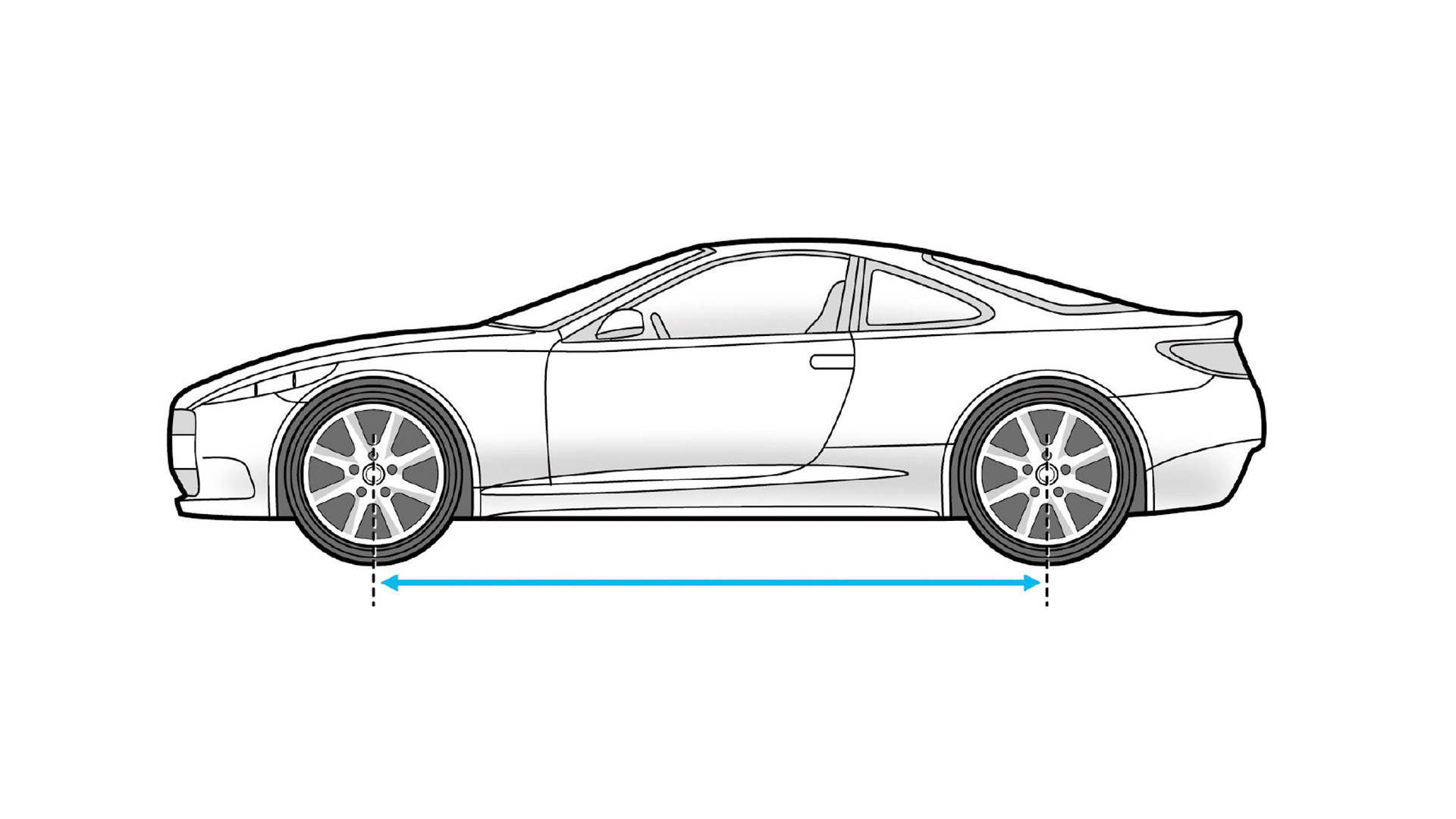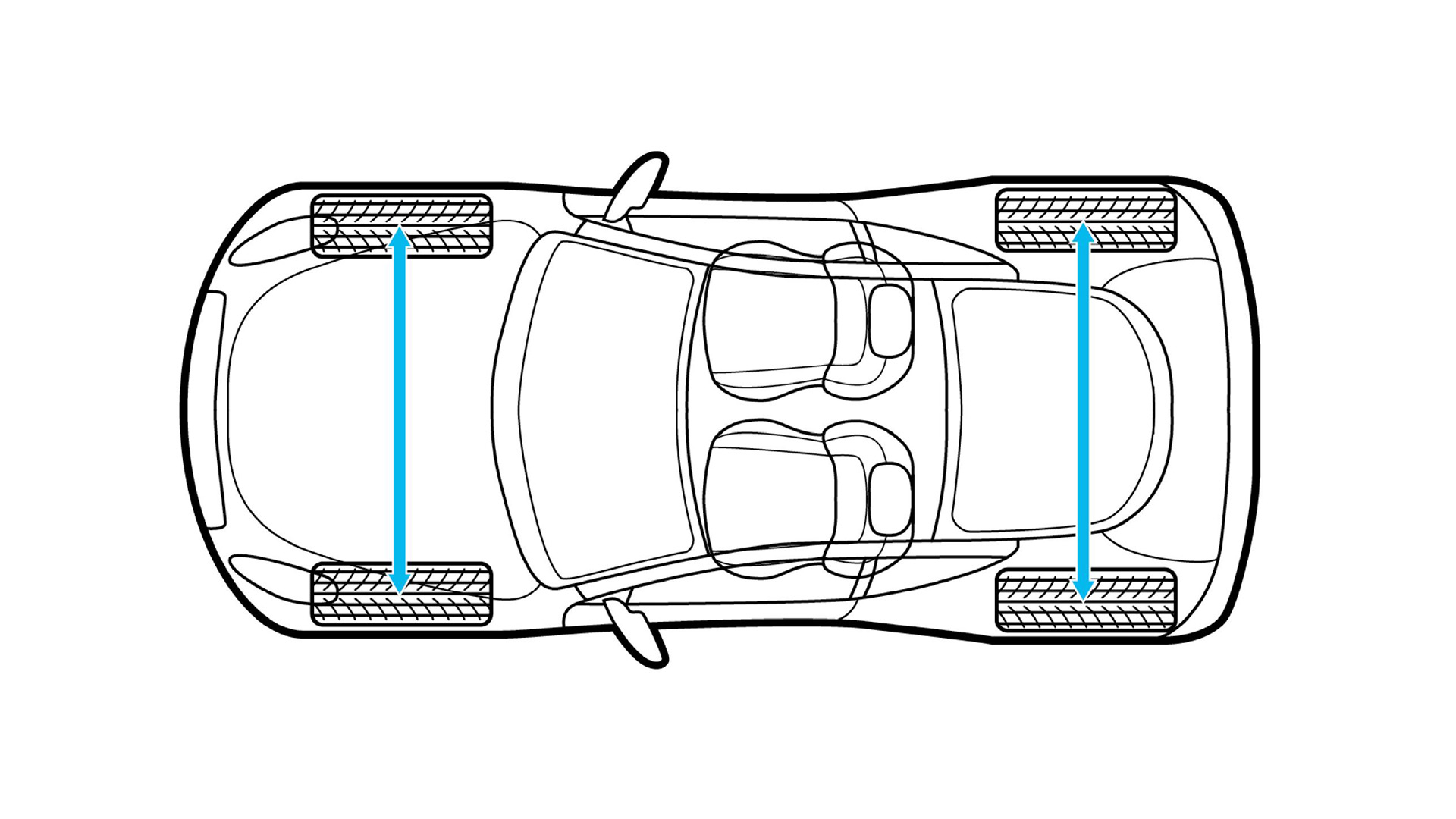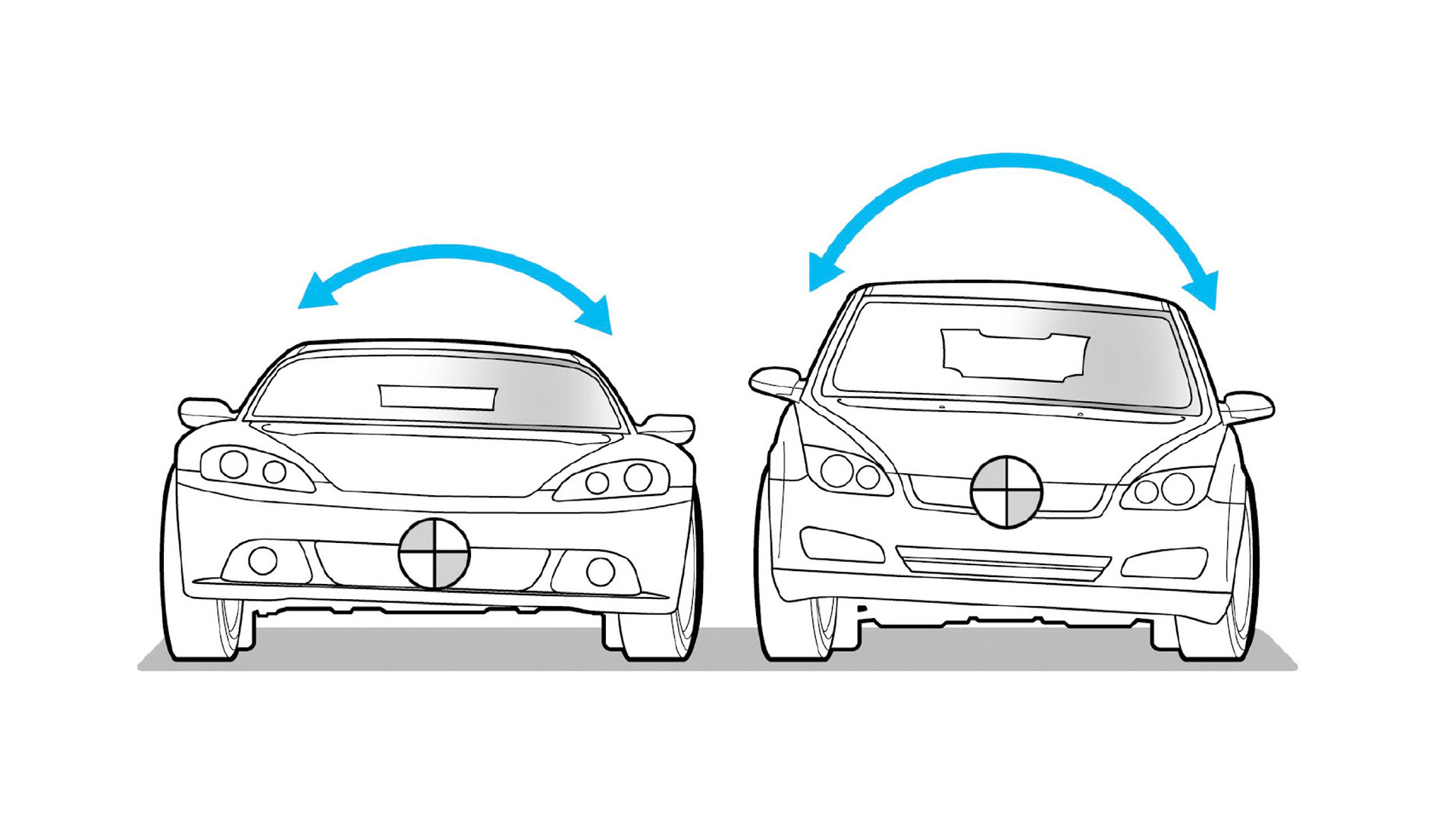Dimensions
Mechanics 1
Values to understand your car’s potential
A car’s exterior design isn’t everything. If you have an understanding of what the numbers mean in the following specifications, you’ll be better placed to determine a vehicle’s true potential.
●Wheelbase
The distance from the center of the front wheel to the center of the rear wheel when looking at the car from its side is called the wheelbase. Typically, the longer the wheelbase of the car, the less affected it will be by crosswinds and undulations in the road surface, as well as having superior straight line stability and stability during braking. At the opposite end of the spectrum, the shorter the wheelbase, the less stable the car – although a shorter wheelbase also makes it possible to design for a smaller yaw moment of inertia (the force which acts against yaw movement), which means that the car’s steering will be sharper.

Wheelbase
●Overhang
The distance from the center of the front wheel (or the wheel axis) to the front tip of the body is called the front overhang, and the distance from the center of the rear wheel to the rear end of the body is called the rear overhang. Weight in these areas will greatly affect the yaw moment of inertia for the car, and will reduce its handling performance; however, a certain amount of overhang is required in order to create effective aerodynamic downforce, so its length is usually decided by the application and character desired for the car.

Overhang
●Tread
The distance between the center of the tire contact-patch of the left and right tires is called the tread (width). Typically, widening the tread will reduce the amount of horizontal load movement during cornering, equalizing the load applied to the four wheels. This will help the car to hug a corner better. By intentionally differentiating the tread width of the front and rear wheels, it is also possible to tune the handling characteristics of a car.

Tread
●Vehicle Height / Center-of-gravity Height
The height from the road surface to the highest location on the car body is called the vehicle height, while the height from the road surface to the car’s center of gravity is the center-of-gravity height.

Vehicle Height / Center-of-gravity Height
●Vehicle Weight
The lighter a car is, the less engine torque you need to move the car forward and the less brake torque you need to stop the car. Reducing weight will also raise a car’s tuning performance. The vehicle weight divided by its maximum output is called the ‘power to weight ratio’; the smaller this value is, the faster the acceleration of the car will be.
